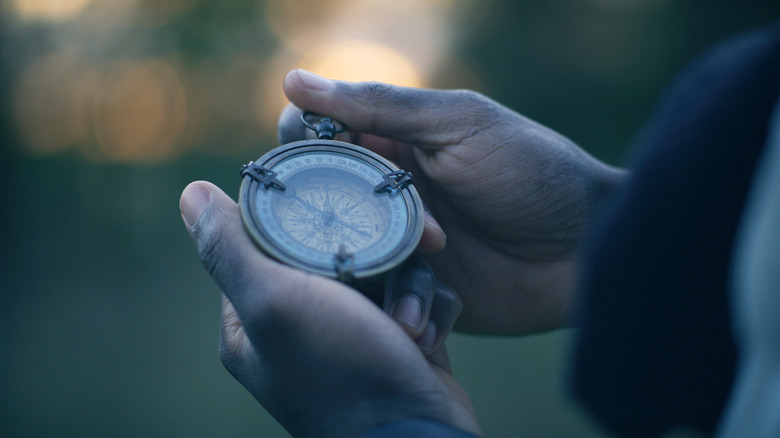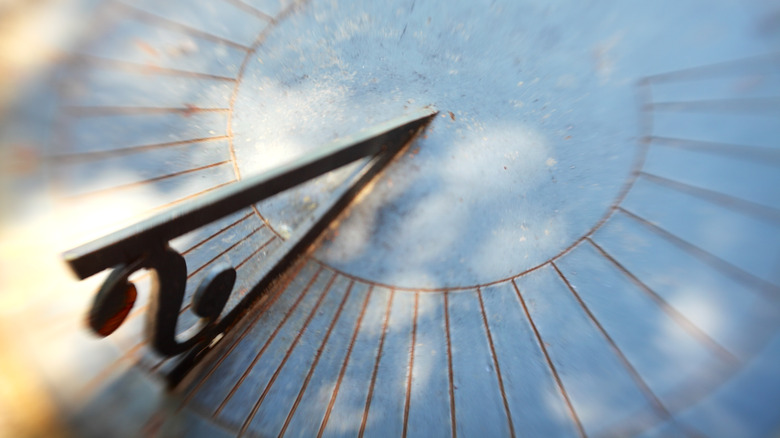The Easy Way To Use Your Watch As A Compass
In today's modern world, technology has become our steadfast companion, guiding us through the complexities of everyday life. From GPS navigation to smartphone apps, we've grown accustomed to relying on digital aids to navigate unfamiliar terrain. However, amidst the dizzying array of high-tech gadgets, it's all too easy to overlook the timeless wisdom of age-old survival techniques.
Before the advent of electronic devices, ancient civilizations used astronomical markers and celestial bodies as their guiding lights. Scholars looked to the heavens for clues to orient themselves in the vast expanse of the natural world. They observed the movements of the sun, stars, and planets, recognizing their significance in marking the passage of time, and observed how these patterned movements could help to discern direction.
One of the most fundamental astronomical markers used for this purpose was the sun. The daily journey of the sun across the sky provided a reliable reference point for determining location. The sunrise, sunset, and the sun's position at midday helped to discern the cardinal directions. While many of us today may not possess the intricate knowledge required to navigate solely by the sun, we can leverage these ancient insights and adapt their methods to suit modern circumstances. If you ever find yourself lost in the woods without a map or a compass, a modern twist on these age-old techniques can turn your plain old wristwatch into a rudimentary compass.
Use your watch and the sun to align yourself
You can use an analog or digital wristwatch for this hack. In order for it to work, ensure your watch is displaying the correct time. Then, find the sun in the sky. With your watch parallel to the ground, rotate the face of the clock so that the short hour hand points to the sun. If you're using a digital watch, imagine where the numbers and hands would be and do the same. With the hour hand pointed at the sun, draw an imaginary line between the smaller distance that separates the hour hand and the 12 o'clock mark. The direction that this imaginary line is pointing in represents the cardinal direction in your hemisphere. That is, south in the Northern Hemisphere and north in the Southern Hemisphere.
Knowing the cardinal direction offers a starting point for orienting yourself toward your intended destination. Of course, with only this information, you may find it challenging to navigate back to a familiar place. Nonetheless, if you know the direction from which you came or your intended destination, this hack can provide an approximate sense of your current location to it. It's not 100% accurate, but this simple yet ingenious technique could help you find your general bearings.
How does this technique work?
This method works based on the principle that the movement of our clocks is aligned with the sun's movement across the sky. It is well-established that the sun travels in an arc from east to west over the course of a day. Similarly, a watch's hour hand moves steadily throughout the day. When you align the hour hand with the sun, you create a reference line for the east-west axis. However, as Xplorer2 explains, your clock's hour hand moves twice as fast as the sun (since your clock makes two full rotations for one of every Earth's). This is why, to find the cardinal direction, you halve the angle between the hour hand and 12 o'clock. The cardinal direction differs in each hemisphere because of the Earth's tilted axis.
For those more scientifically inclined, you may already know that our clocks don't congruently mirror the sun's path. This is especially true when Daylight Savings Time is in effect and clocks are moved forward by one hour. As such, in the summers, you also have to mentally account for this one hour shift if using this hack.
Beyond that, people who are very close to the poles or very close to the equator may find this hack less reliable since the sun's path is atypical in these areas. As such, it's important to remember that this method is meant only to provide a rudimentary sense of direction and can't orient you with 100% accuracy the way a compass would.


